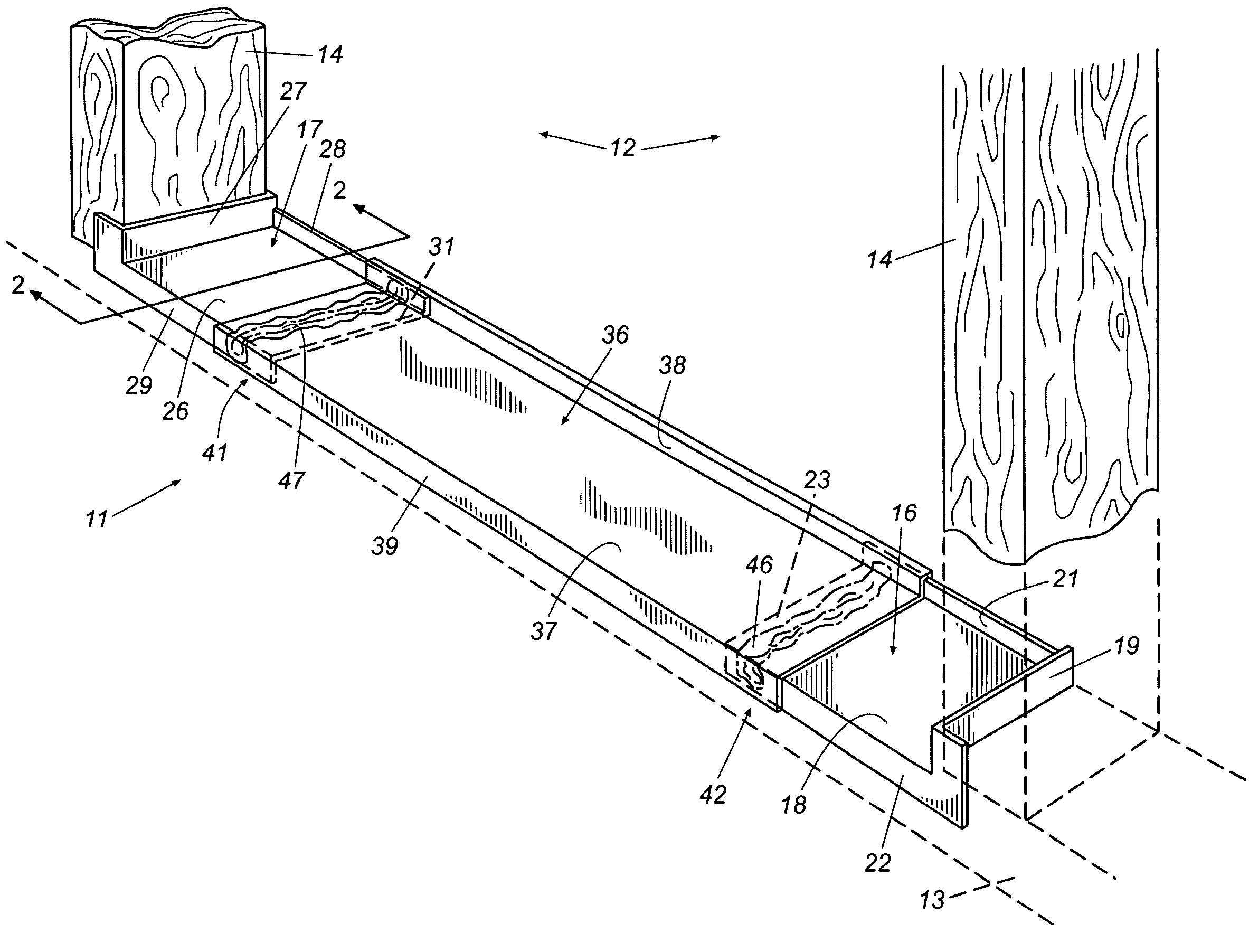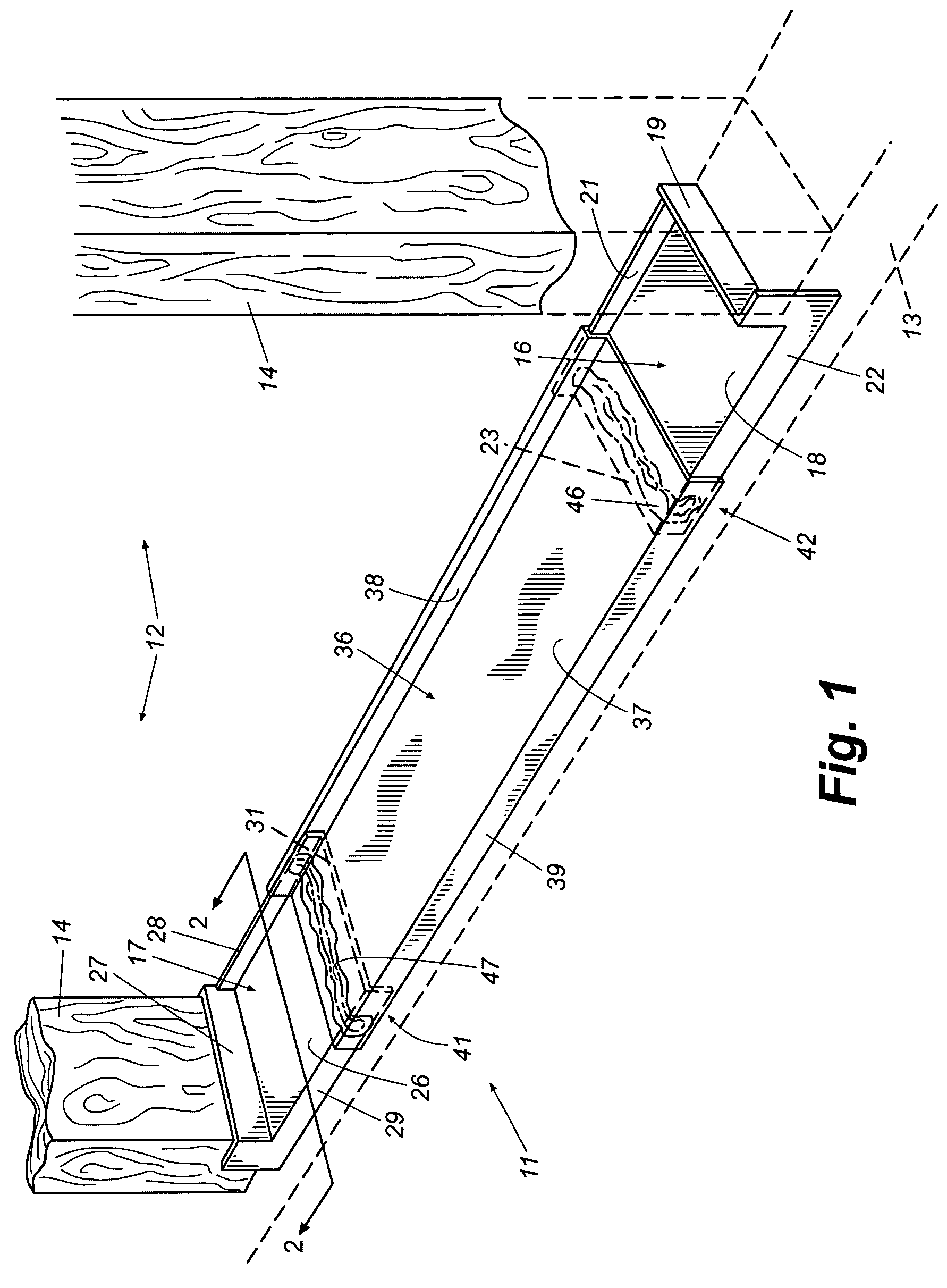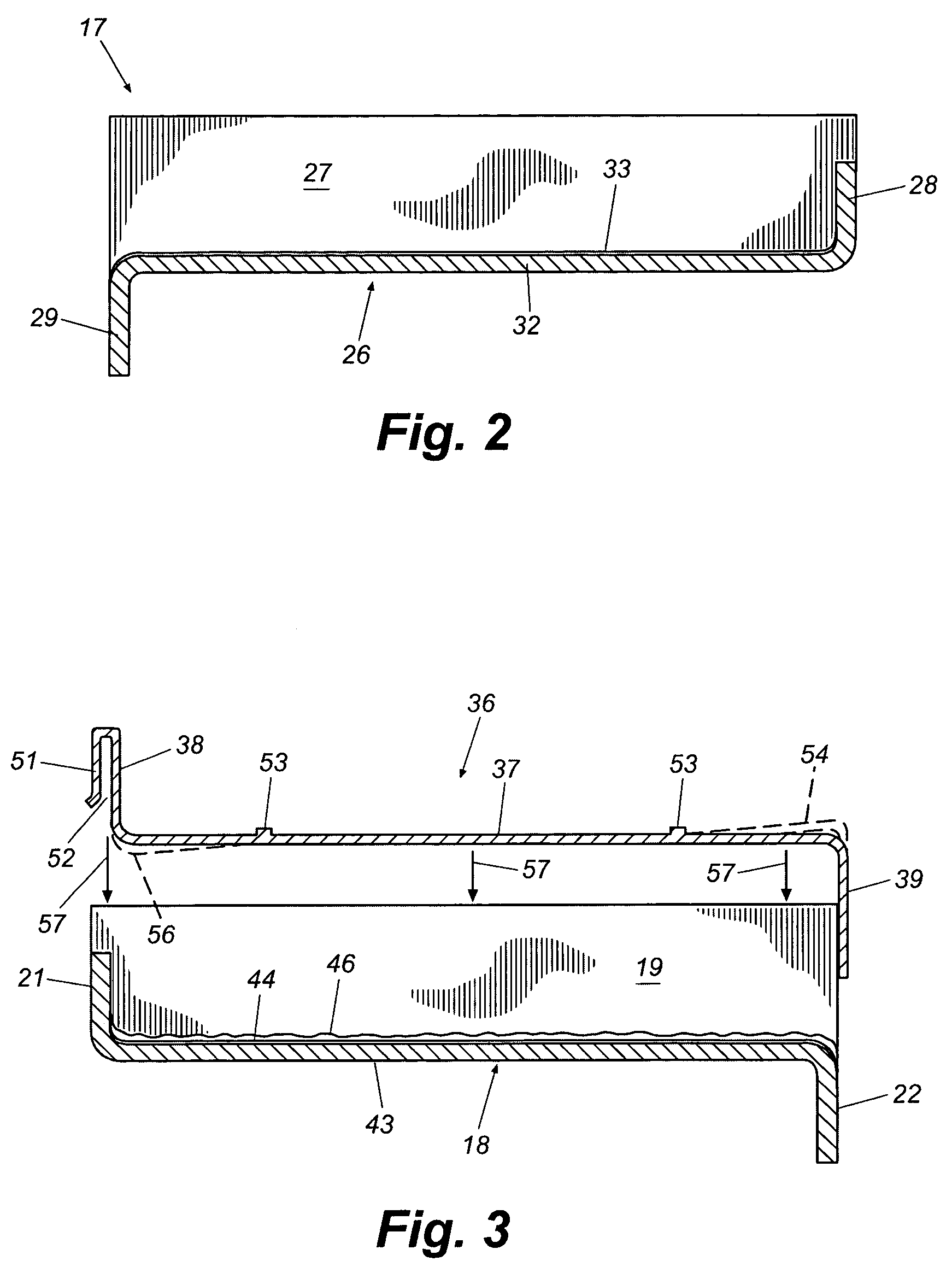Sill pan system
a technology of sliding pans and sliding doors, which is applied in the direction of snow traps, building roofs, sills/thresholds, etc., can solve the problems of affecting the performance of the system, and affecting the quality of the product. , to achieve the effect of superior abrasion resistance, less expensive, and reduced manufacturing costs
- Summary
- Abstract
- Description
- Claims
- Application Information
AI Technical Summary
Benefits of technology
Problems solved by technology
Method used
Image
Examples
Embodiment Construction
[0021]Referring now in more detail to the drawing figures, wherein like numerals refer, where appropriate, to like part throughout the several views, FIG. 1 illustrates a sill pan system that embodies principles of the invention in a preferred form. The sill pan system 11 is shown installed in a framed-in opening 12 of a building structure. The framed-in opening 12 may be a window opening or a door opening and, in the illustrated embodiment, is defined by a sill plate 13 and a spaced pair of vertical studs 14. A horizontal header (not shown) defines the upper perimeter of the framed-in opening. If the framed-in opening is a window opening, the sill plate 13 may be defined by a horizontally extending stud. Alternatively, if the framed-in opening is a door opening, the sill plate generally will simply be part of the subfloor of the building structure. In either case, the sill pan system 11 of this invention is installed in the framed-in opening between the bottom end portions of the v...
PUM
 Login to View More
Login to View More Abstract
Description
Claims
Application Information
 Login to View More
Login to View More - R&D
- Intellectual Property
- Life Sciences
- Materials
- Tech Scout
- Unparalleled Data Quality
- Higher Quality Content
- 60% Fewer Hallucinations
Browse by: Latest US Patents, China's latest patents, Technical Efficacy Thesaurus, Application Domain, Technology Topic, Popular Technical Reports.
© 2025 PatSnap. All rights reserved.Legal|Privacy policy|Modern Slavery Act Transparency Statement|Sitemap|About US| Contact US: help@patsnap.com



